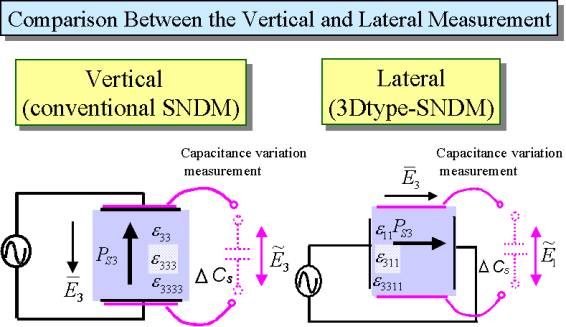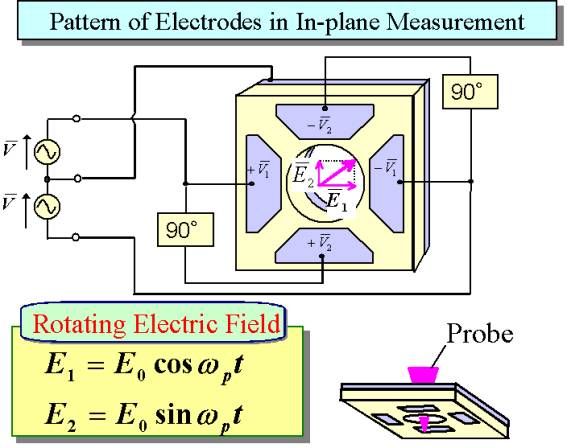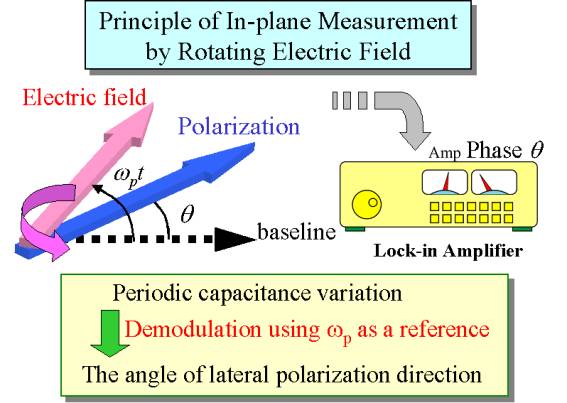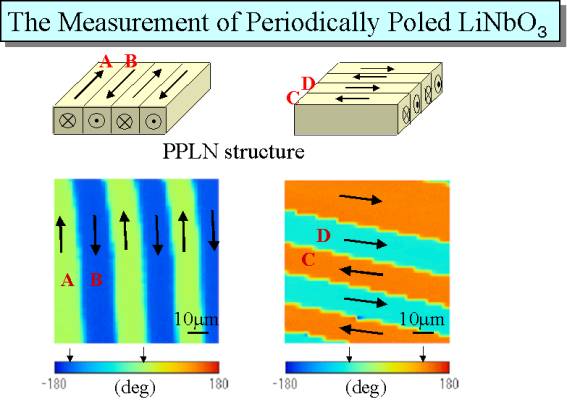
As we have explained in the section of "Principle of SNDM", SNDM can measure polarization component perpendicular to the surface by detecting nonlinear dielectric constant ε333. On the other hand, 3D-type SNDM can measure polarization component parallel to the surface applying electric field in lateral direction. In this measurement, we detect the dielectric constant ε311.If we combine these measurements, it is possible to measure polarization direction in three-dimension.

In measurement of lateral polarization, we use a rotating electric field, which rotates with an angular frequency ωp, by applying a 90° shifted electric voltage between the four electrodes. It makes that amplitude of capacitance variation is changed periodically; when electric field is parallel to the polarization direction, the amplitude has maximum value, and when the electric field is perpendicular to the polarization direction, the amplitude has minimum value. By demodulating this periodic signal using lock-in amplifier with a reference signal of angular frequency ωp, we can obtain the in-plane angle of polarization direction directly from the phase output of lock-in amplifier.


These pictures show the polarization distribution of Periodically Poled LiNbO3 (PPLN) measured using the rotating electric field. The phase signal of lock-in amplifier obtained from region A, B, C and D agree well with the actual polarization angle of the sample as shown in these figures.
